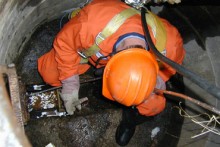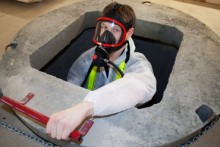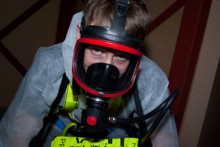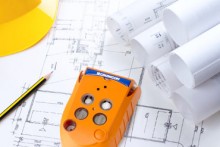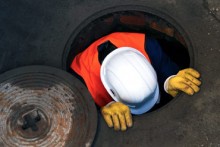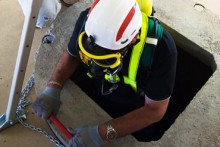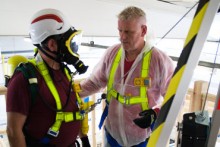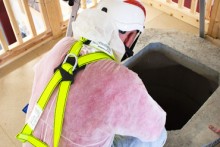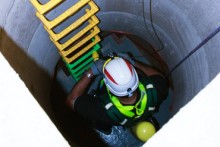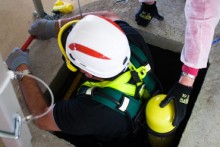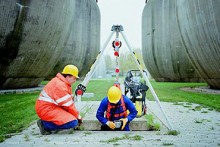If you have assessed the area and decided it simply isn’t possible to do the work without entering the confined space, it is your responsibility to make sure that you have a safe system for working inside the space that employees will be sent inside.
The results of the risk assessment should be used to help identify the precautions you need to take to reduce the risk of injury within the enclosed area. The precautions needed will vary on the nature of the space, the associated risk and the work involved so each area must be assessed individually.
A safe system of work must be developed and put into practice. Any employees involved with the procedure should be properly trained/instructed on the use of the equipment, how to use it safely and how to work safely within the confined space.
Although this is a not an exhaustive checklist of what to look for, this includes many of the essential elements to help prepare a safe system of work.
Appointment of a Supervisor
The supervisor should be the person(s) responsible at all times to make sure that necessary precautions are taken, the correct equipment is used and best practice is to remain present while the work is underway in case an accident does happen.
Are Employees Suitable for the Work?
Ask yourself if the employee who will do the work has experience of this type of work, and what training they have received to make them suitable for this task. Is a risk assessment highlights that the confined space is particularly limiting, consider if the build of the employee is suitable for the space being entered.
Other factors such as claustrophobia, fitness when wearing heavy breathing equipment etc should be considered and medical advice can be sought before the go ahead is given.
Isolation
Before any work must go ahead effective isolation of mechanical and electrical equipment should be enforced. Gas, vapour or fume generation must also be isolated through the pipework and extensive checks should be made to ensure that the isolation is effective before the work is carried out.
Cleaning before Entry
This may be necessary to ensure fumes do not develop from residues etc while the work is done.
Provision of Ventilation
You may be able to increase the number of openings and therefore improve ventilation. Mechanical ventilation may be needed to make sure there is an adequate supply of fresh air. This is essential where portable gas cylinders and diesel-fuelled equipment are used inside the space because of the dangers from build-up of engine exhaust. Warning: carbon monoxide in the exhaust from petrol-fuelled engines is so dangerous that use of such equipment in confined spaces should never be allowed.
Testing the Air
Testing the air may be necessary to check that it is free from both toxic and flammable vapours and this it is fit to breathe. Testing should be carried out by a competent person using a suitable gas detector which is correctly calibrated. Where the risk assessments indicates that conditions may change, or as a further precaution, continuous monitoring of the air may be needed.
Provision of Special Tools and Lighting
Non-sparking tools and specially protected lighting are essential where flammable or potentially explosive atmospheres are likely. In certain confined spaces (eg inside metal tanks) suitable precautions to prevent electric shock include use of extra low voltage equipment (typically less than 25V) and, where necessary, residual current devices.
Provision of Breathing Apparatus
All employees who will enter the confined space must be provided with the means to breathe comfortably and safely within the area. If gas, vapour, fumes or a lack of oxygen is present then the risk to the employee of injury increases significantly.
Never try to sweeten the air using extra oxygen as this can greatly increase the risk of a fire or an explosion.
Preparation of Emergency Arrangements
Emergency arranges will need to cover the necessary equipment, training and practice drills.
Provision of Rescue Harness
Lifelines attached to harnesses should run back to a point outside the confined space. A rescue harness gives those not in the space the ability to rescue an employee within the space without risking their own life.
Communications
The person inside the confined space should be able to communicate with the team outside quickly and safely in order to minimise the time required to request aid in the event of a problem.
Check How the Alarm is Raised
Do you need to position someone outside to keep watch and to communicate with anyone inside, raise the alarm quickly in an emergency and take charge of the rescue procedures?
Is a ‘Permit to Work’ Necessary?
A permit-to-work ensures a formal check is undertaken to make sure all the elements of a safe system of work are in place before people are allowed to enter or work in the confined space. It is also a means of communication between site management, supervisors and those carrying out the hazardous work. Essential features of a permit-to-work are:
- Clear identification of who may authorise particular jobs (and any limits to their authority) and who is responsible for specifying the necessary precautions (eg isolation, air testing, emergency arrangements etc)
- Making sure that contractors engaged to carry out work are included
- Training and instruction in the issue of permits
- Monitoring and auditing to make sure that the system works as intended

